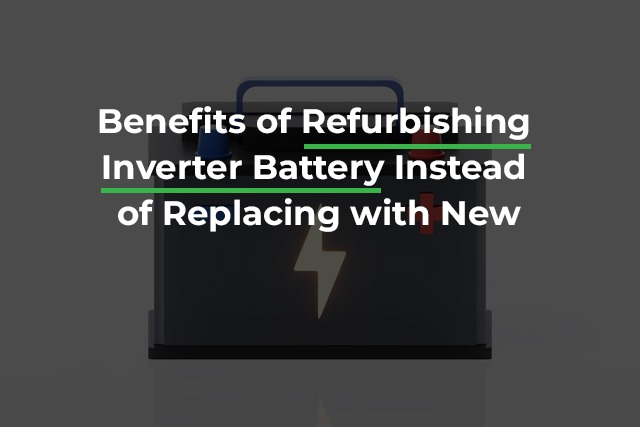- info@restorelife.io

Nature is a delight from rejuvenating to soul-nourishing, it provides a safe space for all beings. Yet nature has its limitations that must be urgently addressed to avoid the downturn. Inverter batteries release harmful gases like hydrogen and sulfur dioxide that are highly inflammable and suffocating in nature. These gases are attributed as major greenhouse gases and air pollutants that influence the increase of temperature of the earth, leading to acid rain, and global warming.
Old and useless inverter batteries are hazardous waste that pollutes as well as contaminates soil and water bodies. Hence, replacing the inverter battery frequently or once the battery is completely dead exhibits a potent risk for individuals.
Refurbished Inverter Batteries are an excellent way to rejuvenate the inverter batteries that no longer provide service due to ion accumulation, reaching saturation point, overcharging, rust, corrosion, or dryness.
Exploring the article will highlight the benefits of Refurbish Battery Instead of Replacing it with a new one.
Benefits of using Refurbished Inverter Battery
An average inverter battery lasts up to 3-5 years generating the necessity of replacing it with a brand-new one every 3-5 years which takes a significant toll on the pocket of a middle-class individual, whereas ReStore battery provides a great alternative to reusing the old and dead inverter battery by refurbishing, it allows the inverter battery to restore its capabilities and work with the efficiency of a brand new battery.
Battery restoration or refurbishment is an effective way to a sustainable future as:
1. Extended Battery Life: Refurbished batteries always have an edge over dead inverter batteries and even new ones, as they increase the life span of the batteries to almost 3 to 5 years, the process of refurbishment increases the longevity of the batteries to several folds by reversing the degradation process.
2. Cost-effective: One of the most important benefits of a refurbished battery over replacing it with a new one is that it reduces the cost of purchasing a new inverter.
A new inverter battery costs about 10-15,000 rupees whereas the cost of rejuvenating a dead battery is just half of it.
3. Environment-friendly: Refurbished batteries are the most environment-friendly, due to the restoration process it reduces the hazardous waste generated by waste inverter batteries to a more sustainable product, that could be used for several years without hampering its efficiency.
4. Reduced amount of waste: Refurbishing the inverter battery leads to less accumulation of waste and fewer hazardous landfills. Recycling inverter batteries is one significant way of reducing the amount of waste in the environment by restoring the capacity of a dead battery for more years.
Conclusion:
Threats to nature due to higher rates of accumulation of hazardous waste are a matter of concern that needs urgent attention. One such major step in maintaining the equilibrium of nature is educating people more about recycling inverter batteries by refurbishing and reconditioning them from time to time. Battery refurbishment is one economic way to a sustainable future.